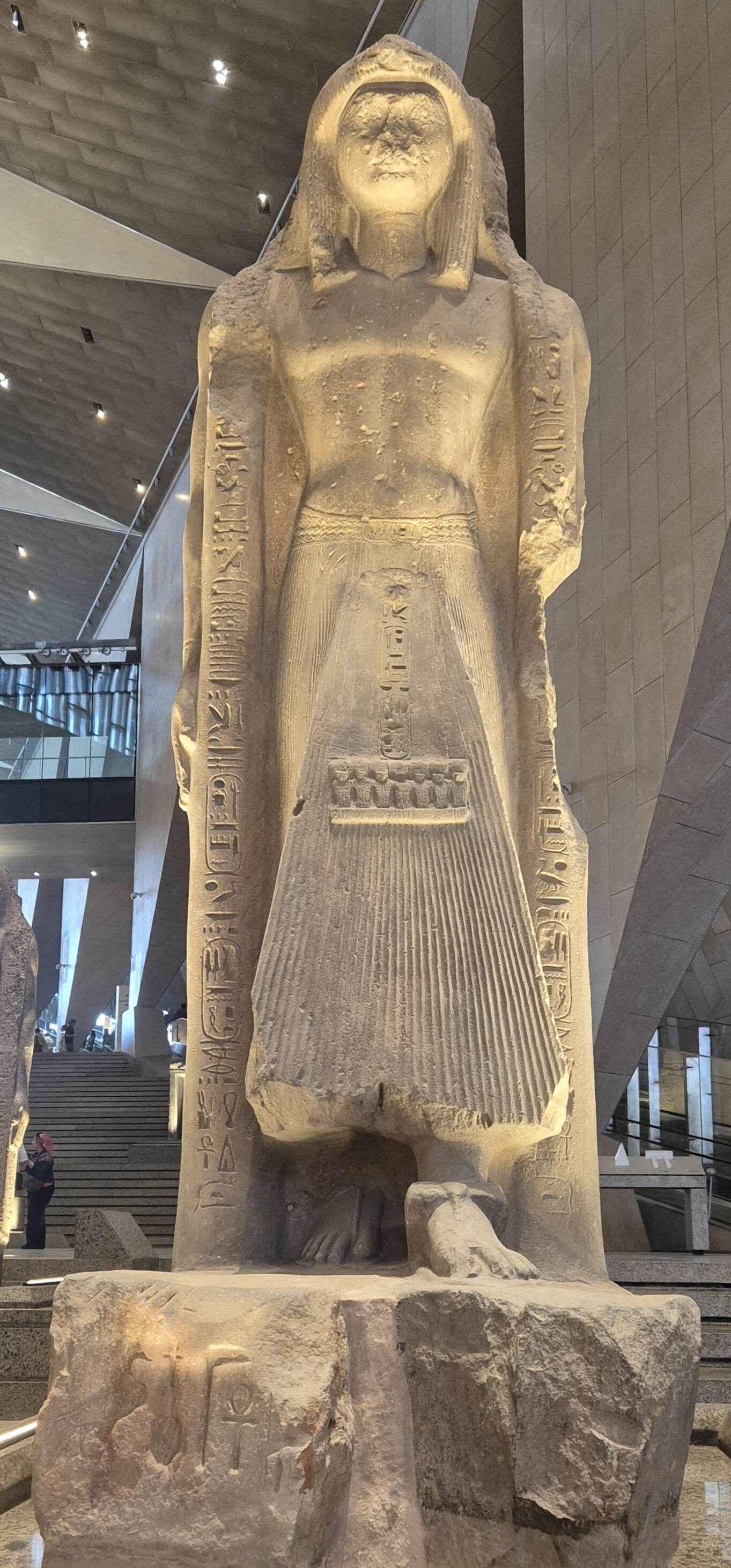
GEM 2236
Statue of King Sety II Holding Standards
In the twilight of Egypt’s 19th Dynasty, during a time marked by dynastic instability and internal rivalry, King Sety II emerged as a pharaoh struggling to maintain control over a crumbling royal legacy. This statue, discovered in the Karnak Temple in Thebes, presents Sety II in a classic pose—holding two standards, royal emblems that signify his authority over the divine order and military tradition. Above one of the standards rests a small image of a deity, a typical symbol in processional or ceremonial sculpture that reinforces the king’s connection to the gods.
Sety II was the son of Merneptah and the grandson of the great Ramses II, but unlike his forebears, his reign (circa 1200–1194 BCE) was marked by confusion. His accession to the throne was quickly challenged by a rival king named Amenmesse, whose origins remain mysterious. Amenmesse briefly ruled Upper Egypt and perhaps Nubia, possibly overlapping with or even usurping Sety’s rule for several years. Scholars debate the exact nature of their relationship—he may have been a half-brother, cousin, or unrelated noble.
This period is ... Découvrez plus avec Premium !
Débloquez toute l'histoire de cet artéfactPassez à Premium pour accéder à la description complète, aux guides audio et au contenu exclusif de tous les artéfacts.Accédez à l'audio complet et à la description des principales œuvres du GEM pour seulement 1,99 $
Vous cherchez un autre artéfact ?